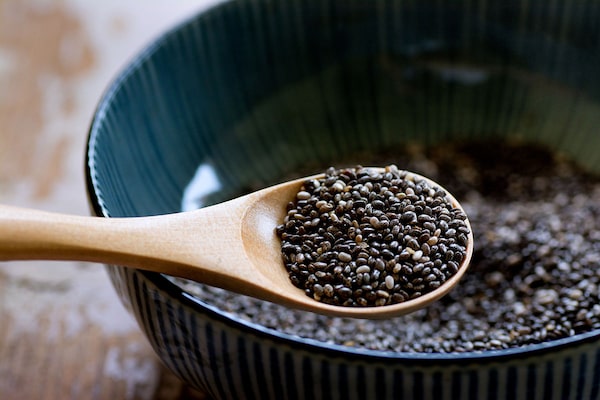
iStockPhoto / Getty Images
This story is part of a series examining the role that gut health and probiotics – such as live bacteria found in Activia yogurt products – can play in your life
Have you tried chia lately?
These nutritionally dense seeds, harvested from a plant in the mint family called Salvia hispanica, have become a sensation in foodie circles in recent years. They’re known for their easy preparation, mild flavour and long list of nutritional benefits.
“Chia seeds are tiny edible seeds that are high in fibre, protein and healthy fats, as well as many important vitamins and minerals,” says Jodi Robinson, founder of Craving Health Dietitian & Wellness Services in Vineland, Ont. “I think they have become so popular because they are so versatile.”
Ancient jet packs
Chia enjoyed a long history of consumption before becoming a health food trend. The plant is native to Mexico and Guatemala, where it was widely consumed in the Aztec empire as both a food and a medicine. In fact, chia seeds were such a staple in their diets that they rank among the empire’s top three crops after maize and beans.
“The Aztecs called chia the ‘running food,’ and carried it with them on long training expeditions,” explains Christy Brissette, registered dietitian and President of 80 Twenty Nutrition in Chicago. “They claimed it provided lasting energy.”
Today, chia seeds come over 80 varieties and have expanded well beyond their ancestral home; they’re now harvested across Central and South America and consumed across the world.
Tiny nutritional powerhouses
Scientists have also begun to unlock the nutritional calculus that fueled these Aztec marathons. Brissette, whose graduate thesis at the University of Toronto examined chia’s impact on health, notes that the seed’s wide-ranging health properties make it a near perfect energy source.
An ounce of chia seeds (roughly two tablespoons) adds up to about 140 calories. In return, however, the body gets 11 grams of fibre, 4 grams of protein, 9 grams of fat (more than half of which come from omega-3 fatty acids), calcium, magnesium, zinc, potassium, and B-vitamins.
For return on caloric investment, this makes chia seeds a valuable source of multiple nutrients.
Friendly fibre
From a fibre standpoint, chia is “particularly exciting,” Brissette says. “Even though the seeds are 35 per cent carbohydrate, the majority of those carbs are fibre, which happens to fit in with all those low-carb diet trends like paleo and keto.”
The amount of soluble fibre in chia can help make a person feel fuller and more satisfied after consumption, which can then decrease the need to eat too many additional calories. This works by slowing down the absorption of glucose into the bloodstream, stabilizing blood sugar and preventing spikes and drops in blood sugar that can trigger hunger.
Finally, the fermentable type of fibre in chia acts as a prebiotic, which feeds the good bacteria in your colon and stimulates a healthy gut.
Getting the most out of your seeds
Smoothies are a great place to add a little chia, but there are so many more ways to enjoy it. An online search for chia recipes will instantly deliver hundreds of ways to make chia pudding. Chia becomes gel-like when submerged in water, creating a natural pudding-like texture that makes it a natural fit for the rich dessert.
Robinson notes that vitamin C can help the body absorb the iron present in chia. “Chia seeds contain non-heme iron which is not absorbed well on its own,” she says. “When paired with a source of vitamin C, your body is better able to absorb the iron from the chia seeds. For example, topping your chia seed pudding with mixed berries.”
Chia also gives a quick and easy nutrient boost to yogurt and granola. Activia has just launched their new Activia Chia, which combines probiotic yogurt, chia seeds and real fruit such as raspberries, cranberries, cherries and peaches.
Sensible consumption
While it’s tempting to jump full-throttle into a new health kick, particularly one as easy to incorporate as chia seeds, both dietitians suggest proceeding with caution.
“Anytime you’re going to make a big change in your eating habits, talk to your doctor first,” Brissette advises.
Because some studies have shown that chia seeds may have an effect on cholesterol levels, they may interfere with any medications taken for controlling any related health conditions.
It’s also important to build up to extra fibre intake slowly to avoid any gastrointestinal strain like bloating, gas or diarrhea.
But when consumed in moderation, chia is a versatile, nutrient-rich food that’s easy to incorporate into a healthy diet.
Advertising feature produced by Globe Content Studio. The Globe’s editorial department was not involved.